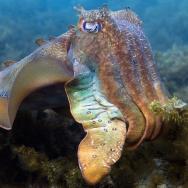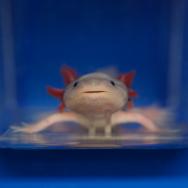It sounds like a just-so story—“How the Insect Got its Wings”—but it’s really a mystery that has puzzled biologists for over a century. Intriguing and competing theories of insect wing evolution have emerged in recent years, but none were entirely satisfactory.
Finally, a team from the Marine Biological Laboratory at Woods Hole, Massachusetts, has settled the controversy, using clues from long-ago scientific papers as well as state-of-the-art genomic approaches. The study—published this week in Nature Ecology & Evolution—was conducted by research associate Heather Bruce and director Nipam Patel of the Marine Biological Laboratory, which is affiliated with the University of Chicago.
Insect wings, the team confirmed, evolved from an outgrowth or “lobe” on the legs of an ancestral crustacean (yes, crustacean). After this marine animal had transitioned to land-dwelling about 300 million years ago, the leg segments closest to its body became incorporated into the body wall during embryonic development, perhaps to better support its weight on land. “The leg lobes then moved up onto the insect’s back, and those later formed the wings,” said Bruce.
One of the reasons it took a century to figure this out, Bruce said, is that it wasn’t appreciated until about 2010 that insects are most closely related to crustaceans within the arthropod phylum, as revealed by genetic similarities.
“Prior to that, based on morphology, everyone had classified insects in the myriapod group, along with the millipedes and centipedes,” Bruce said. “And if you look in myriapods for where insect wings came from, you won’t find anything. So insect wings came to be thought of as ‘novel’ structures that sprang up in insects and had no corresponding structure in the ancestor -- because researchers were looking in the wrong place for the insect ancestor.”
Bruce picked up the scent of her now-reported discovery while comparing the genetic instructions for the segmented legs of a crustacean, the tiny beach-hopper Parhyale, and the segmented legs of insects, including the fruit fly Drosophila and the beetle Tribolium.
Using CRISPR-Cas9 gene editing, she systematically disabled five shared leg-patterning genes in Parhyale and in insects, and found those genes corresponded to the six leg segments that are farthest from the body wall. Parhyale, though, has an additional, seventh leg segment next to its body wall. Where did that segment go, she wondered?
“And so I started digging in the literature, and I found this really old idea that had been proposed in 1893, that insects had incorporated their proximal [closest to body] leg region into the body wall,” she said.
“But I still didn’t have the wing part of the story,” she said. “So I kept reading and reading, and I came across this 1980s theory that not only did insects incorporate their proximal leg region into the body wall, but the little lobes on the leg later moved up onto the back and formed the wings. I thought, wow, my genomic and embryonic data supports these old theories.”
It would have been impossible to resolve this longstanding riddle without the tools now available to probe the genomes of a myriad of organisms, including Parhyale, which the Patel lab has developed as the most genetically tractable research organism among the crustaceans.
In addition to his role as MBL director, Patel is appointed at UChicago as a professor of Organismal Biology and Anatomy, and of Molecular Genetics and Cell Biology.
“People get very excited by the idea that something like insect wings may have been a novel innovation of evolution,” Patel said. “But one of the stories that is emerging from genomic comparisons is that nothing is brand new; everything came from somewhere. And you can, in fact, figure out from where.”
Citation: “Knockout of crustacean leg patterning genes suggests that insect wings and body wall evolved from ancient leg segments,” Bruce and Patel, Nature Ecology & Evolution, Dec. 1, 2020. DOI: 10.1038/s41559-020-01349-0
Funding: National Science Foundation
—Adapted from an article originally posted by the Marine Biological Laboratory

